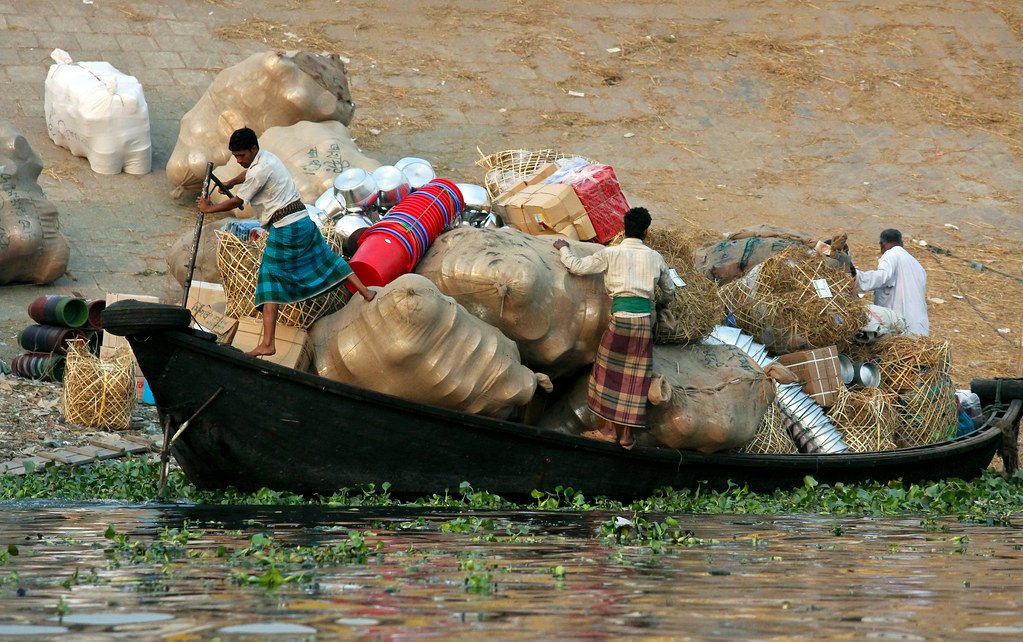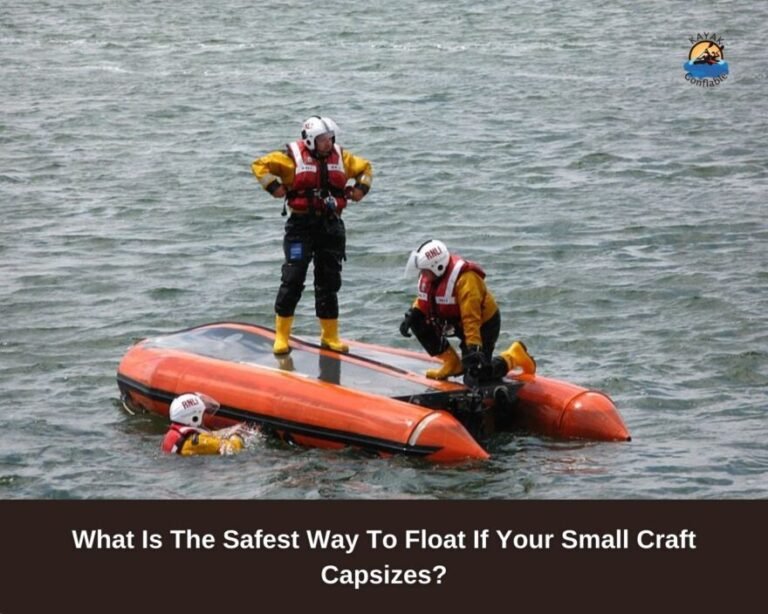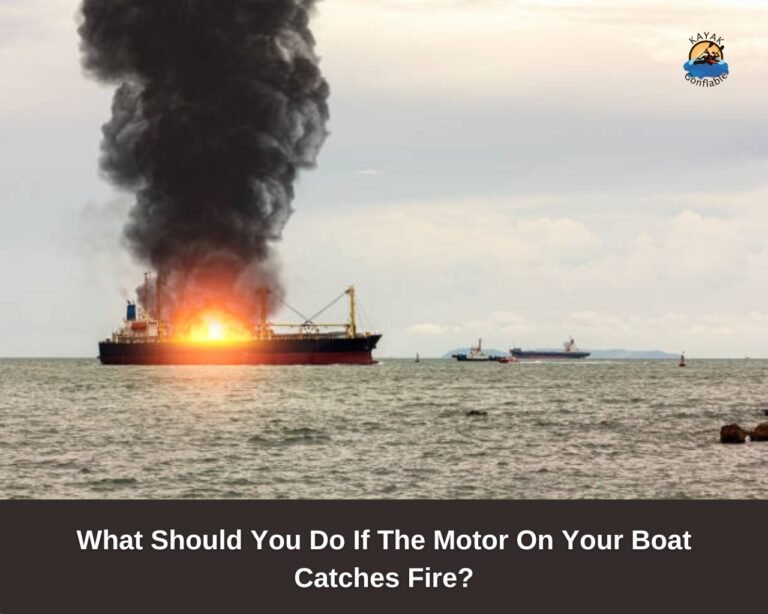How to Prevent Overloading Your Boat

Boating can be a very delightful pastime, offering unique experiences and giving room for exciting adventures (cough… cough… Captain Jack Sparrow).
However, ensuring the safety of both passengers and the vessel is of paramount importance, especially if you are not boating alone. Overloading your boat can lead to disastrous consequences, jeopardizing lives and violating legal regulations.
Why Avoid Overloading Your Boat?
Safety Concerns: Overloading a boat puts everyone on board at risk. Excess weight can lead to instability, making the boat more prone to capsizing, swamping, or taking on water. In emergencies, overloaded boats become more challenging to maneuver, potentially increasing the danger to passengers.
Compliance with Legal Regulations: Legal regulations are in place to ensure boating safety. Overloading your boat can result in fines, penalties, or even legal actions. Each boat has a designated weight capacity determined by its size, design, and manufacturer specifications. Exceeding this limit can result in legal consequences.
Knowing Your Boat’s Weight Capacity
À avoid overloading your boat, it’s crucial to understand its weight capacity, which is primarily determined by the manufacturer. Here’s how you can find and use this information:
- Read Your Boat’s Owner’s Manual: Every boat comes with an owner’s manual that contains essential information about its specifications. This manual is your first point of reference for understanding the weight capacity of your vessel.
- Contact the Manufacturer for Specifics: If the owner’s manual doesn’t provide sufficient information or if you have questions about your boat’s weight limits, don’t hesitate to contact the manufacturer directly. They can offer precise details tailored to your boat’s make and model, ensuring you have accurate information to work with.
Capacity Plates and Their Importance
Capacity plates are often fixed on boats and they play an important role in helping you determine weight capacity. Capacity plates are typically fixed at a visible location on the boat, such as the transom, cockpit, or near the helm.
Look for a metal or plastic plate containing essential information, which may include: Maximum weight capacity; Maximum number of passengers; Maximum engine power (if applicable); Maximum load distribution (e.g., weight distribution between passengers and cargo).
To interpret this information correctly, ensure you understand the units of measurement (e.g., pounds or kilograms) and any additional notes or warnings provided on the plate.
Once you’ve located and understood your boat’s capacity plate, use this information to make informed decisions when loading your vessel. Never exceed the maximum weight capacity indicated on the plate. Pay attention to the maximum number of passengers allowed to ensure everyone’s safety.
Beware that adding accessories, equipment, or modifications can affect your boat’s weight and may require re-evaluation of capacity.
Signs of Overloading
Difficulty In Steering/Planing: Overloaded boats tend to handle poorly. If you find it increasingly challenging to steer or get your boat up on plane, it may be struggling under the burden of excess weight.
Waterline Displacement: Visual cues often reveal when a boat is carrying too much weight. If you notice that your boat’s waterline is significantly lower than usual, it’s a clear sign of overloading. The boat is sitting deeper in the water than it should, indicating an excess of weight on board.
Sluggish Acceleration and Reduced Speed: Performance issues are among the most noticeable signs of overloading. When a boat is carrying too much weight, you’ll experience sluggish acceleration and reduced top speed.
Inadequate Freeboard: Freeboard is the distance between the waterline and the boat’s gunwales (sides). When a boat is overloaded, it has reduced freeboard, making it more susceptible to taking on water, especially in waves or inclement weather.
Reduced La stabilité and Increased Risk of Capsizing: Overloaded boats are inherently unstable. Excessive weight can cause your boat to lean dangerously, increasing the risk of capsizing, especially in rough waters or when encountering wakes from other boats.
Increased Fuel Consumption: Overloading places a greater demand on your boat’s engine. As a result, you’ll notice a significant increase in fuel consumption. Not only is this costly, but it also limits your range and can leave you stranded if you haven’t planned accordingly.
How To Weigh Your Boat Load
Weigh and Categorize Resources: Inventory all equipment, gear, and supplies you plan to bring on your boating trip. This covers everything from safety equipment, sports nautiques gear, and cooking appliances to food and beverages. Weigh each category separately, as some items may be heavier than others.
Sum Up Passenger Weights: Start by totaling the weight of all passengers on board. This includes their individual weights along with any additional items they may be carrying, such as personal gear, bags, or coolers. Be meticulous in your calculations to ensure accuracy.
Managing Freshwater and Wastewater: Freshwater and wastewater storage also contribute to your boat’s overall weight. While it’s essential to have enough freshwater for your trip, consider carrying only what you’ll realistically use. Dispose of wastewater appropriately to avoid unnecessary weight buildup.
Balance the Load for Stability: Proper weight distribution is key to maintaining stability and preventing overloading. Distribute the weight evenly across the boat to keep it level and minimize the risk of capsizing.
Fuel Weight: Fuel adds substantial weight to your boat, and its consumption can impact your vessel’s weight throughout the trip. Calculate the weight of the fuel you’ll carry based on the tank’s capacity and the type of fuel used. Do keep in mind that a full tank will weigh significantly more than an empty one.
Practical Tips for Avoiding Overloading
Pack Light
Differentiate between essential items and non-essential items when packing for your boating trip. Essential items include safety gear, gilets de sauvetage, navigation tools, and required equipment. Non-essential items may include recreational items or extra comforts. Prioritize essentials to ensure you have everything you need while avoiding unnecessary weight.
Make the most of your boat’s storage compartments to keep gear organized and distributed evenly. Stow items securely to prevent shifting while underway. Consider using imperméable containers for items that need protection from water exposure.
Plan Ahead
Develop a comprehensive checklist of necessary supplies, including safety equipment, food, water, and first aid supplies. Refer to your checklist when packing to ensure you don’t forget any essential items. A well-planned inventory helps prevent last-minute additions that can lead to overloading.
Prioritize passenger comfort and safety when planning your trip. Ensure there is enough seating and legroom for everyone on board. Avoid overcrowding, which can compromise safety and comfort.
If you plan to go fishing, be mindful of the weight of your fishing gear and the fish you catch. Consider the capacity of your fish storage compartments and avoid exceeding their limits. If you catch a significant amount of fish, periodically offload them to maintain a safe weight balance.
Water sports equipment like wakeboards, water skis, or towable tubes can add considerable weight to your boat. Check your boat’s weight capacity and make sure it can safely accommodate these items. When not in use, stow water sports equipment to prevent it from becoming a safety danger.
Prevent overloading your boat to ensure the safety of passengers, preserve the integrity of your vessel, and maintain compliance with legal regulations.






